Aligning The Edges Of A Board To The Grain Pattern
In well built furniture, the grain pattern usually should run parallel to the edges of included boards. This is not only creates a more pleasant and soothing piece of furniture, it also avoids jarring clashes at glue joints.
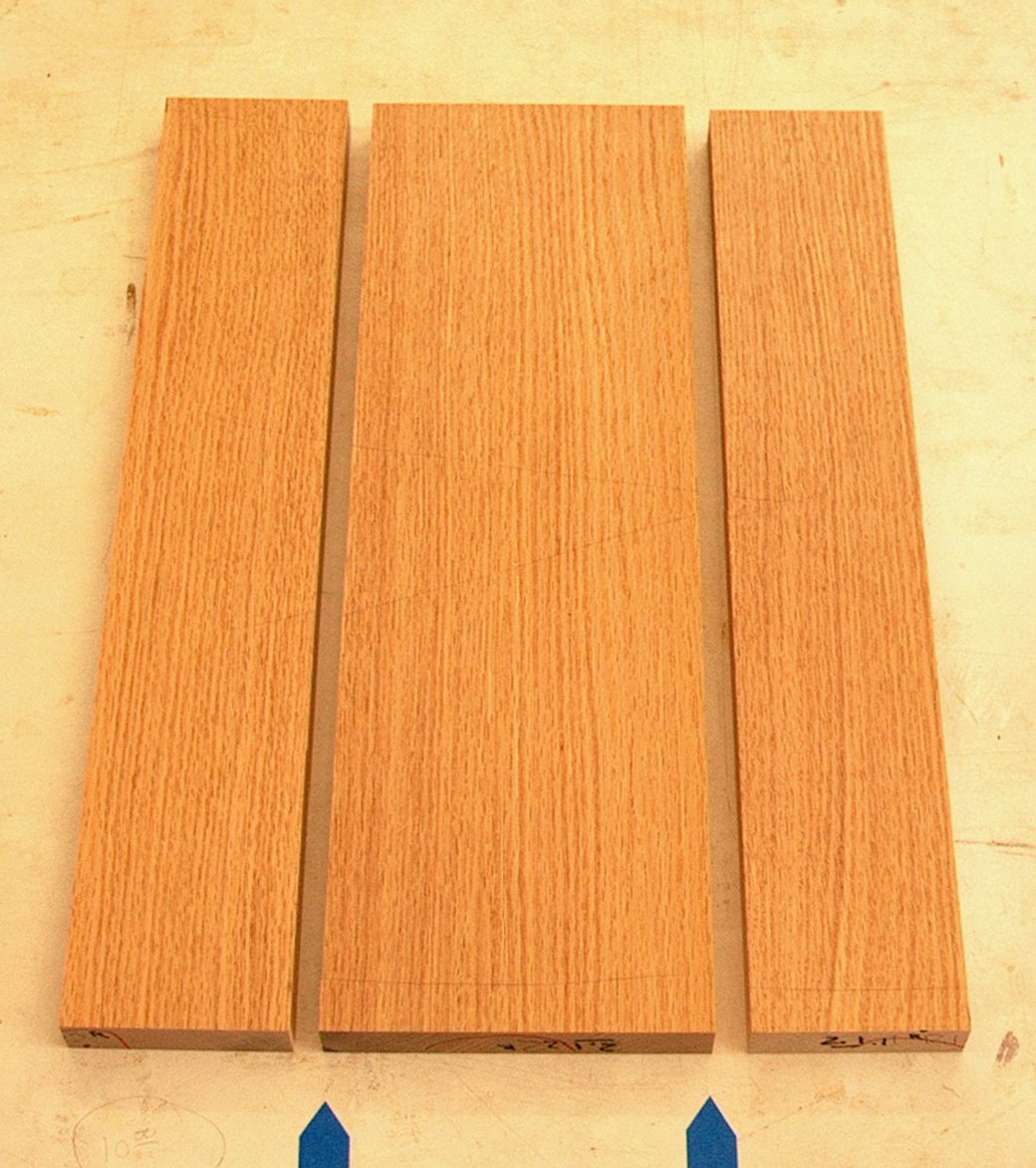
These three boards will be glued to make a drawer front for an office desk.
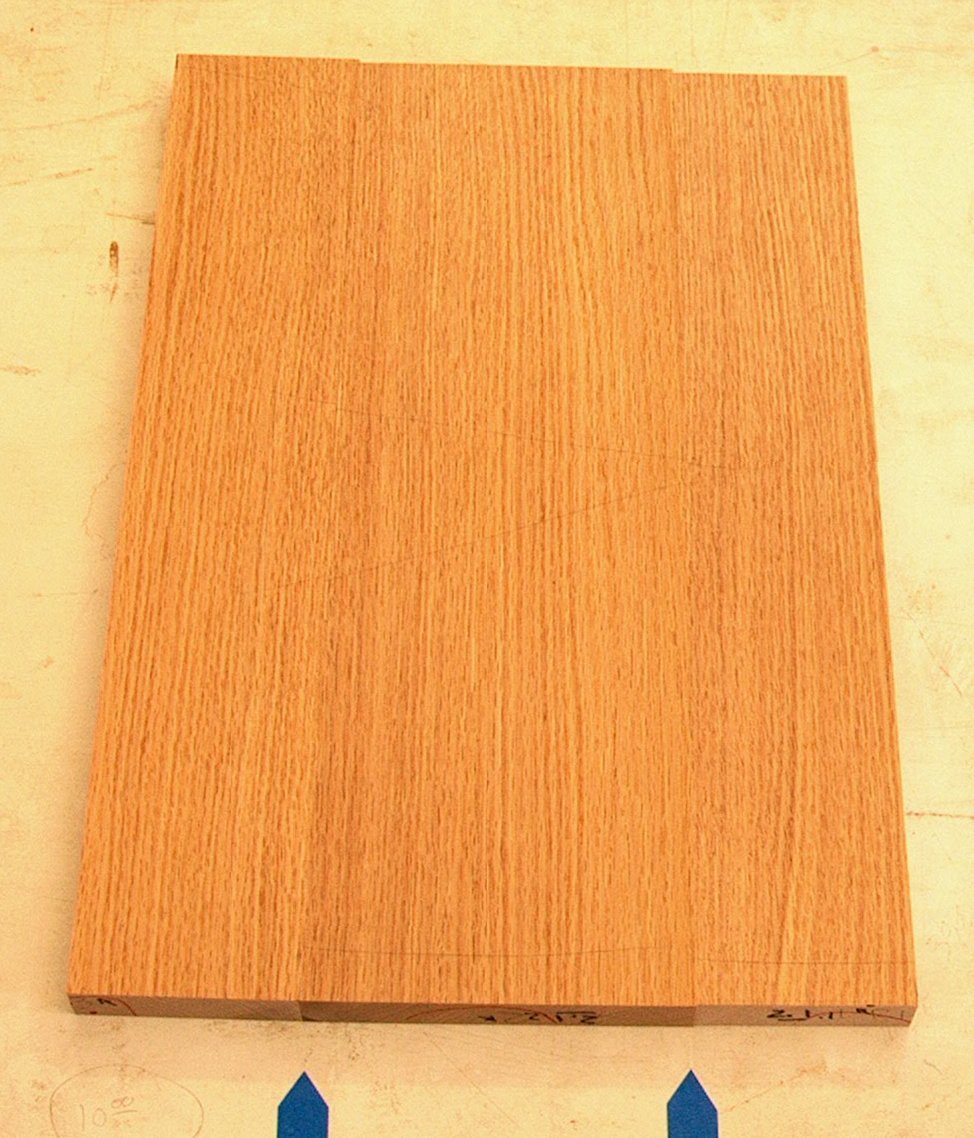
Here are the same three boards brought together. The arrows mark the position of the joints, which are almost hidden.
To achieve this result, the three boards were trimmed to align the grain pattern with the edges.
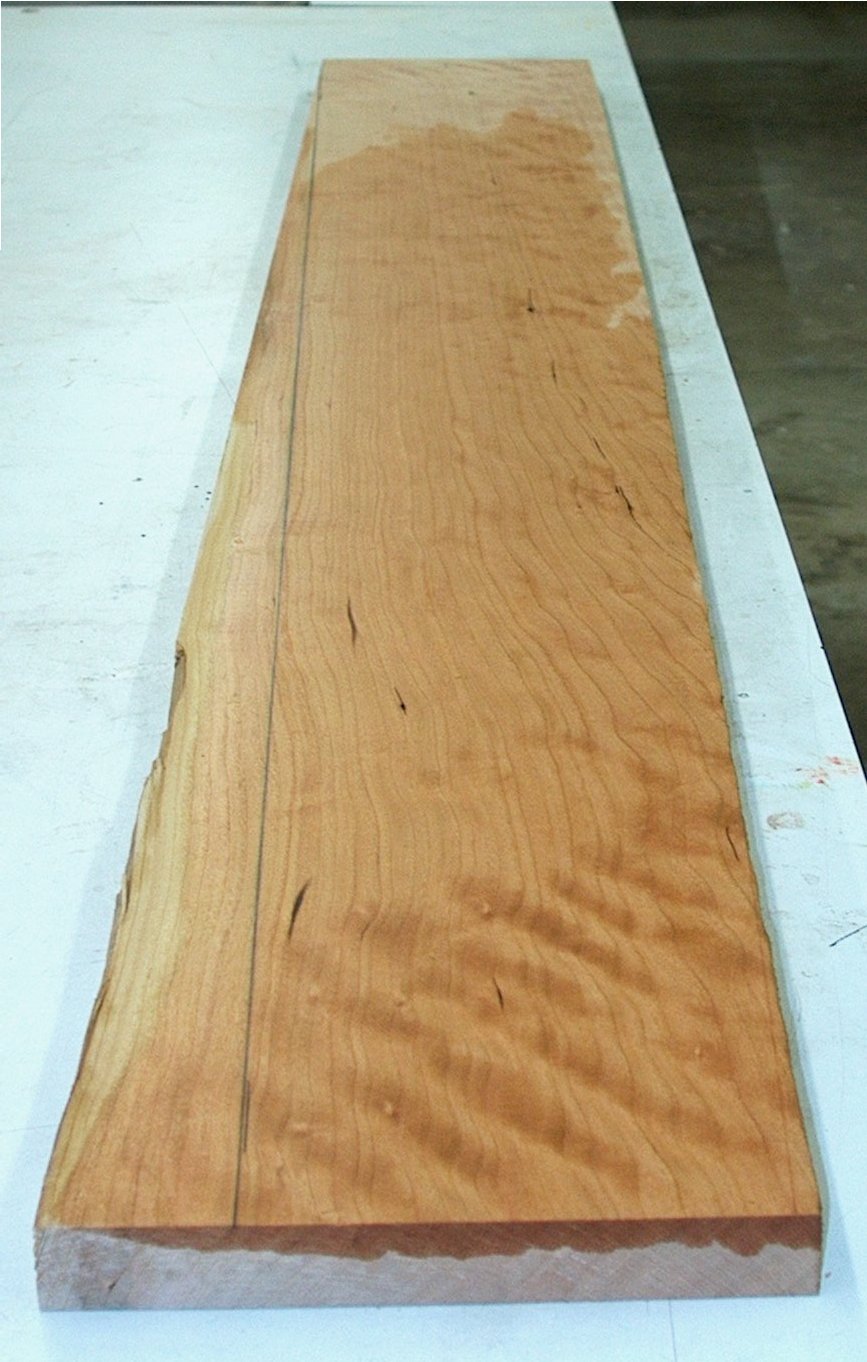
Grain pattern seldom is aligned with the edges of rough lumber. By removing a wedge, one can quickly and easily align the grain pattern. This board has been wiped with mineral spirits to make the grain pattern and figure more easily seen. A pencil line has been drawn showing the wedge to be removed.
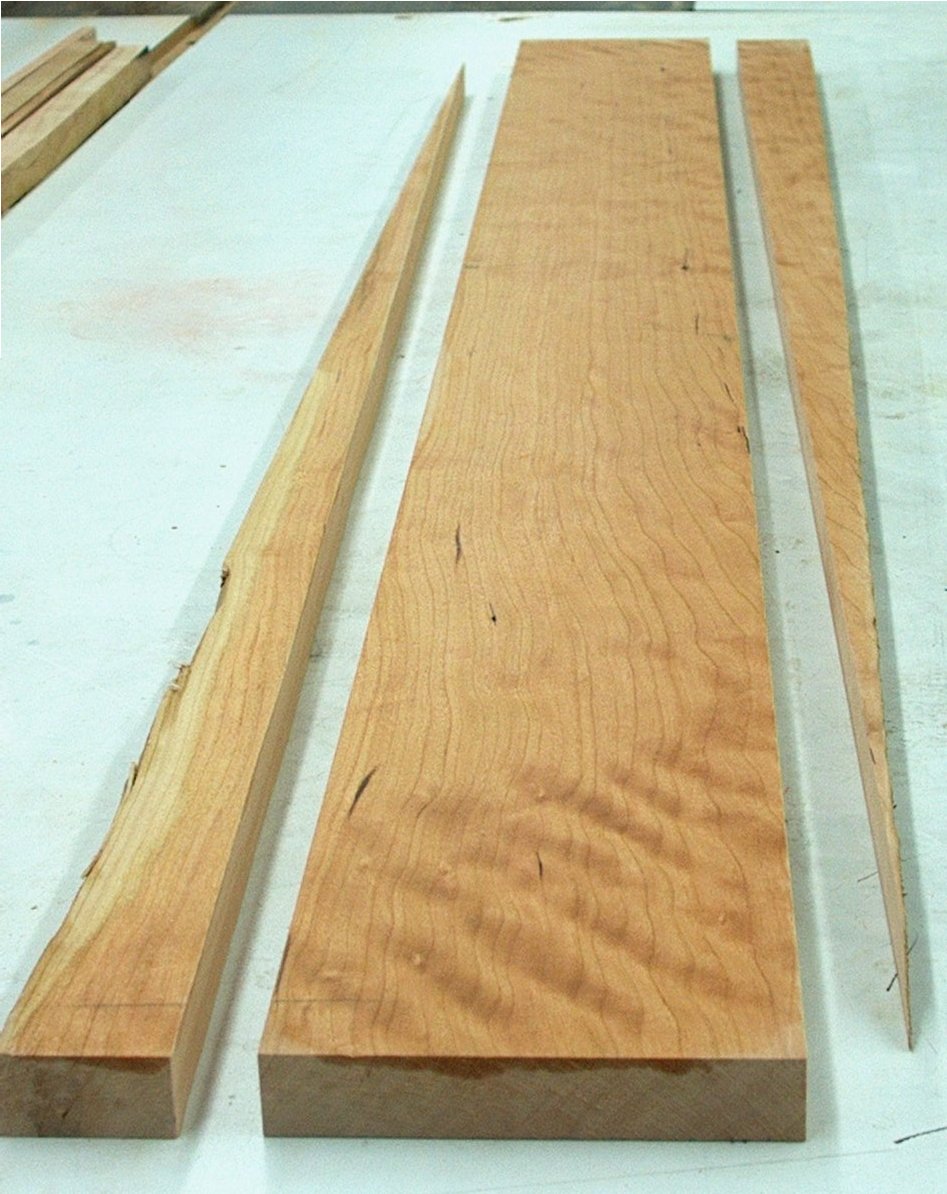
The bandsaw was used to remove the wedge marked by the pencil line. The tablesaw then was used to remove a corresponding wedge on the other edge so that the two (new) edges of the board would be parallel.
While there is some movement in the grain pattern, on average it is now aligned with the edges.
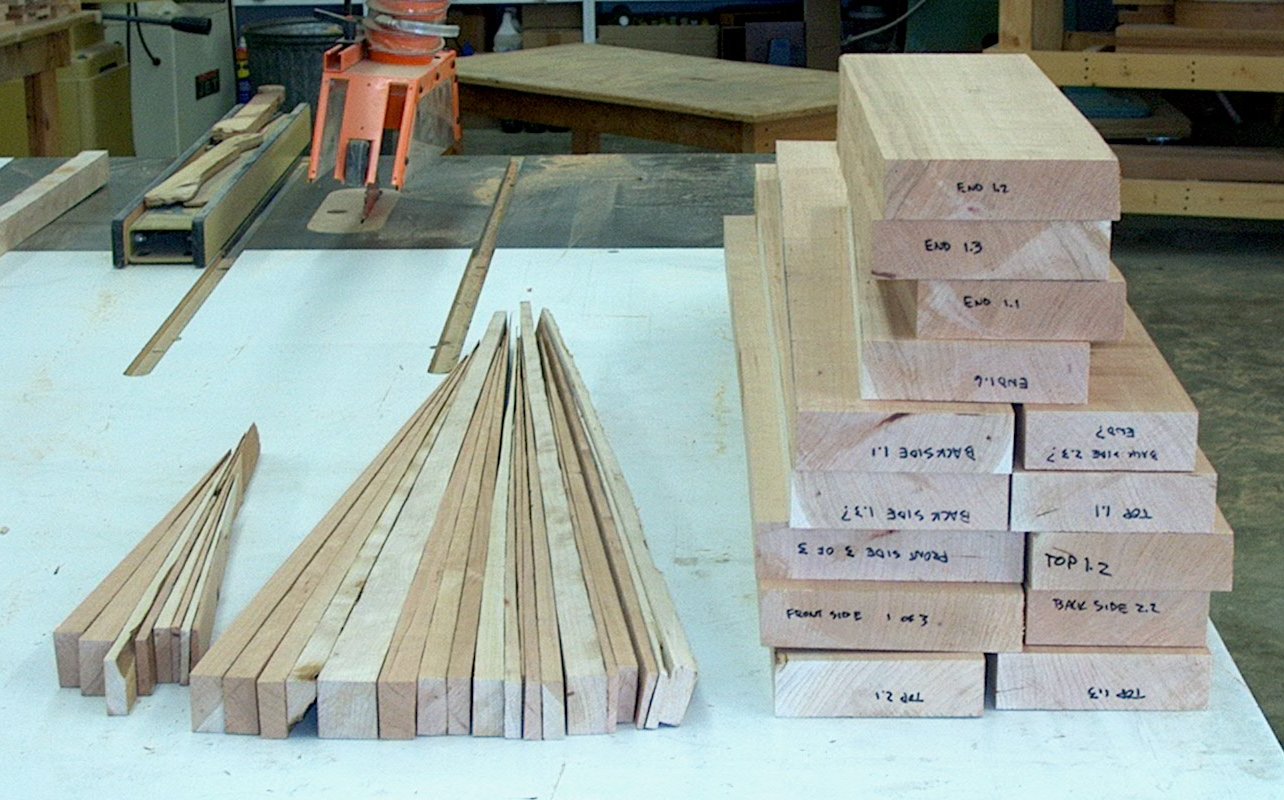
This set of wedges was removed from the accompanying boards being milled for a dovetailed chest. A few extra minutes of work, but the result is a much more visually appealing piece of furniture.
Return to Best Traditional Woodworking Practices page
Appointments are suggested for your convenience.